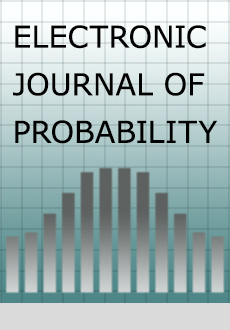Abstract
Let $\{(Z_i,W_i):i=1,\dots,n\}$ be uniformly distributed in $[0,1]^d \times \mathbb{G}(k,d)$, where $\mathbb{G}(k,d)$ denotes the space of $k$-dimensional linear subspaces of $\mathbb{R}^d$. For a differentiable function $f: [0,1]^k \rightarrow [0,1]^d$, we say that $f$ interpolates $(z,w) \in [0,1]^d \times \mathbb{G}(k,d)$ if there exists $x \in [0,1]^k$ such that $f(x) = z$ and $\vec{f}(x) = w$, where $\vec{f}(x)$ denotes the tangent space at $x$ defined by $f$. For a smoothness class ${\cal F}$ of Holder type, we obtain probability bounds on the maximum number of points a function $f \in {\cal F}$ interpolates.
Citation
Ery Arias-Castro. "Interpolation of Random Hyperplanes." Electron. J. Probab. 12 1052 - 1071, 2007. https://doi.org/10.1214/EJP.v12-435
Information





